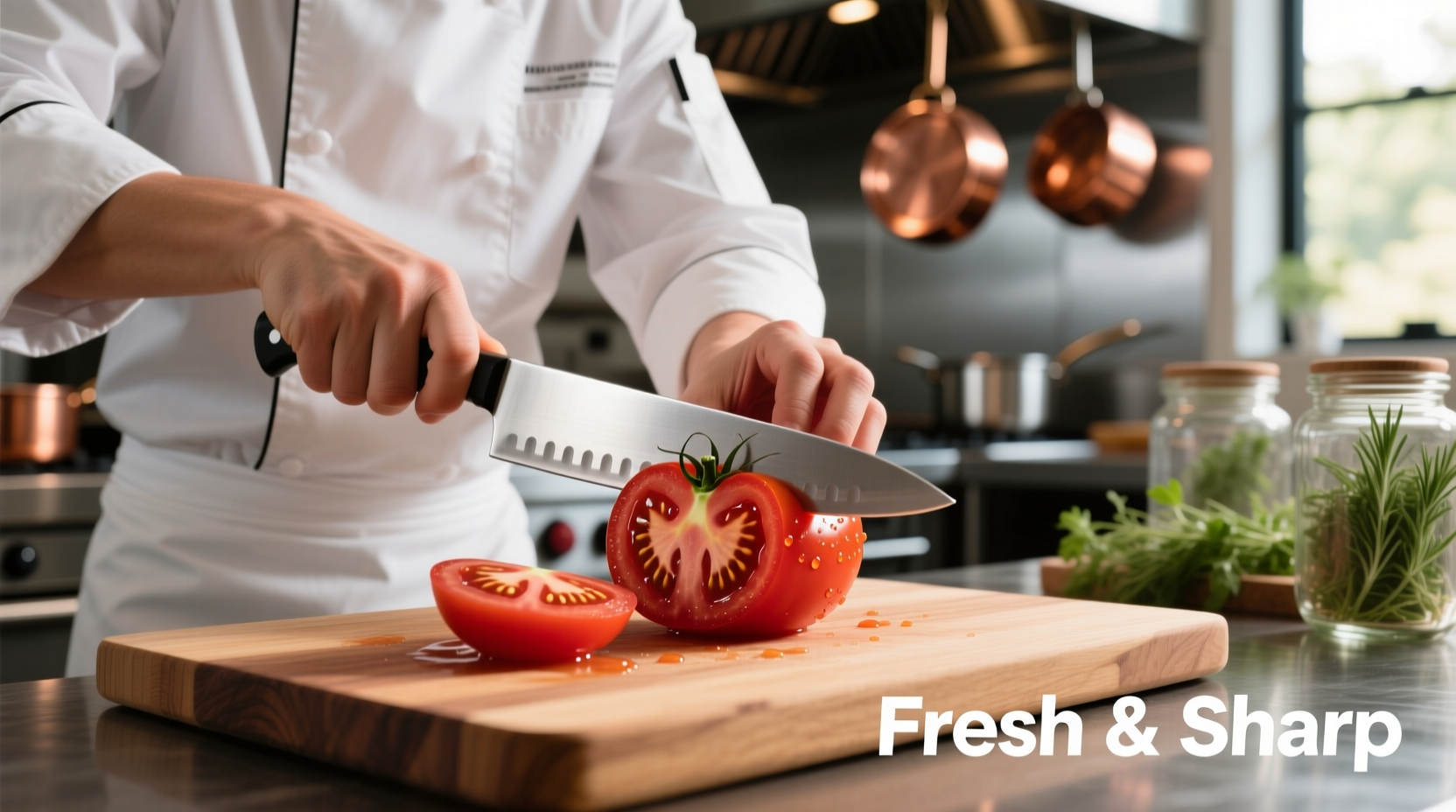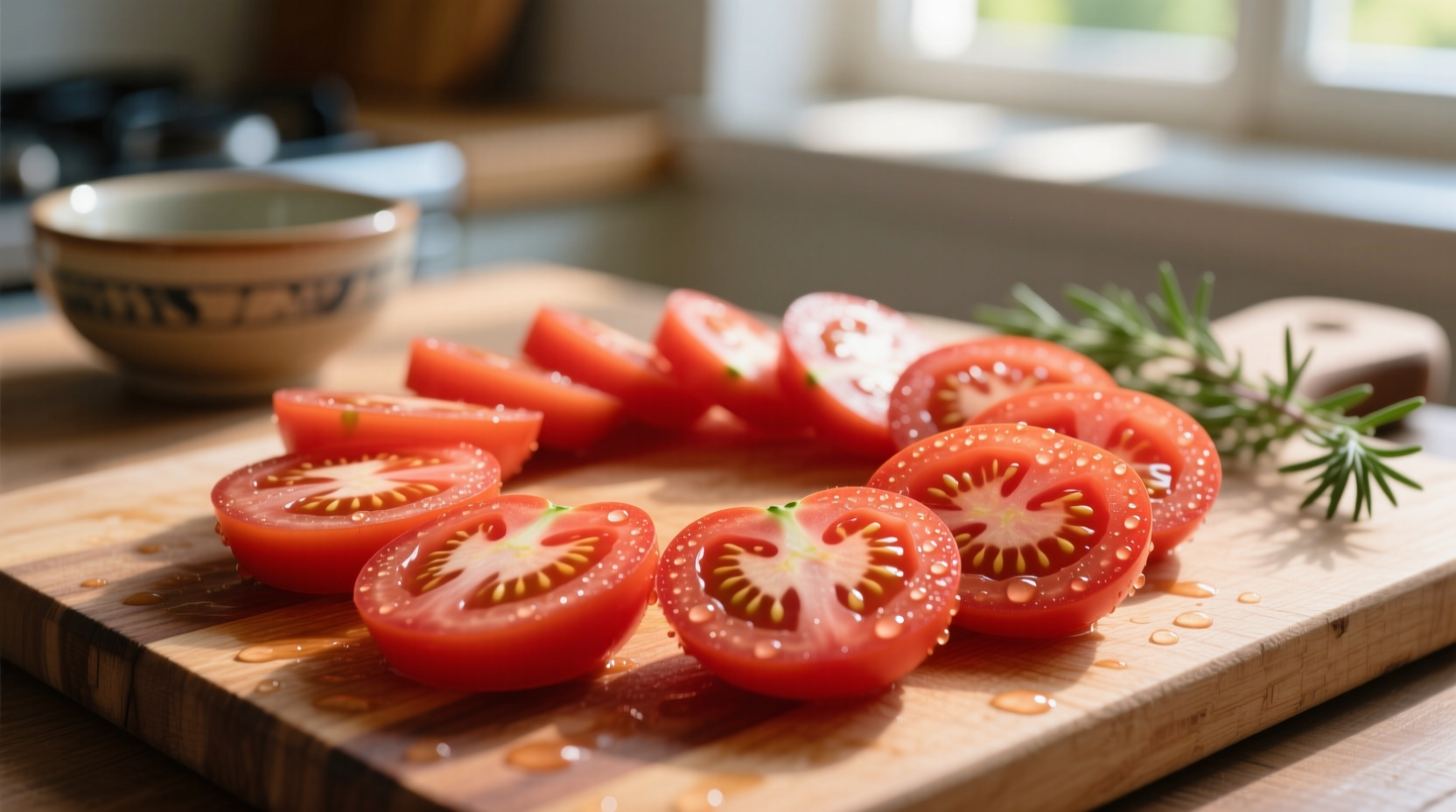The Science Behind Perfect Tomato Slices
Tomato slicing seems simple, but getting consistently good results requires understanding tomato structure and proper technique. When sliced correctly, tomatoes maintain their shape, release optimal flavor, and enhance your dishes rather than making them soggy. The key factors are tomato selection, knife choice, cutting technique, and timing relative to serving.
Selecting the Right Tomatoes for Slicing
Not all tomatoes perform equally when sliced. The best varieties for clean slicing have firm flesh with moderate moisture content. Beefsteak tomatoes remain the gold standard for sandwiches and burgers due to their large size and meaty texture. Roma tomatoes work better for cooking applications where excess moisture is problematic.
| Tomato Variety | Best For | Moisture Level | Slicing Tip |
|---|---|---|---|
| Beefsteak | Sandwiches, burgers, caprese | Moderate | Cut horizontally across the equator |
| Roma/Plum | Cooking, sauces, bruschetta | Low | Remove seeds before slicing |
| Vine-Ripened | Salads, garnishes | High | Slice just before serving |
| Cherry/Grape | Garnishes, salads | Very high | Halve or quarter, never slice |
This comparison comes from the USDA Agricultural Research Service Produce Quality Manual, which details optimal handling techniques for various tomato varieties based on their structural properties.
Essential Tools for Professional Results
Using the right knife makes the biggest difference in your tomato slicing results. A sharp serrated knife (8-10 inches) works best for most slicing applications as it cuts through the skin without crushing the flesh. For precision work like garnishes, a sharp paring knife gives better control.
Always use a stable cutting board—wood or soft plastic works better than hard surfaces that can damage your knife edge. Never use a dull knife, as this compresses the tomato tissue and releases too much juice prematurely.

Slicing Techniques by Culinary Application
The ideal thickness and technique vary significantly depending on how you'll use the tomato slices. Understanding these context boundaries ensures optimal results:
Sandwich and Burger Slices
For sandwiches and burgers, cut 1/4-inch thick slices from the center portion of beefsteak tomatoes. Cut perpendicular to the stem axis (across the equator) rather than from stem to blossom end. This creates wider, more stable slices that won't slip out of your sandwich.
Pro tip: Lightly salt slices 10 minutes before assembling your sandwich, then gently pat dry with paper towels. This draws out excess moisture that would otherwise make your bread soggy, as confirmed by Utah State University Extension food safety guidelines.
Salad Slices
For salads, thinner 1/8-inch slices work best. Use vine-ripened tomatoes for their vibrant color and juiciness. Cut just before serving to prevent excess liquid from accumulating in your salad. When layering tomato slices in presentation-focused salads, rotate each slice 45 degrees from the previous one for an attractive spiral pattern.
Cooking Applications
Different cooking methods require specific slicing approaches:
- Roasting: Cut 1/2-inch thick slices, arrange on baking sheet, and season before roasting at 375°F
- Grilling: Use slightly thicker 3/8-inch slices and brush with olive oil first
- Sauces: Seed Roma tomatoes first, then dice into 1/4-inch pieces
- Garnishes: Use a mandoline for paper-thin slices (1/16-inch) for elegant presentation
Avoiding Common Tomato Slicing Mistakes
Even experienced cooks make these preventable errors:
- Slicing too early: Cut tomatoes no more than 30 minutes before serving to maintain texture
- Using the wrong knife: A chef's knife crushes tomatoes; always use serrated for slicing
- Ignoring temperature: Room temperature tomatoes slice cleaner than cold ones
- Improper storage: Never refrigerate whole tomatoes before slicing—they lose flavor and texture
Storing Sliced Tomatoes Properly
If you must prepare tomato slices ahead of time, follow these food-safe practices from the FDA Food Code guidelines:
- Place slices in a single layer on paper towels
- Cover with additional paper towels to absorb moisture
- Store in an airtight container in the refrigerator
- Use within 24 hours for best quality
- Bring to room temperature before serving for optimal flavor
When to Skip Slicing Entirely
Not every application benefits from sliced tomatoes. For soups, stews, and sauces, consider these alternatives:
- Score and blanch tomatoes for easy peeling before dicing
- Use a food mill to separate seeds and skin from pulp
- For quick sauces, crush tomatoes by hand for rustic texture











 浙公网安备
33010002000092号
浙公网安备
33010002000092号 浙B2-20120091-4
浙B2-20120091-4